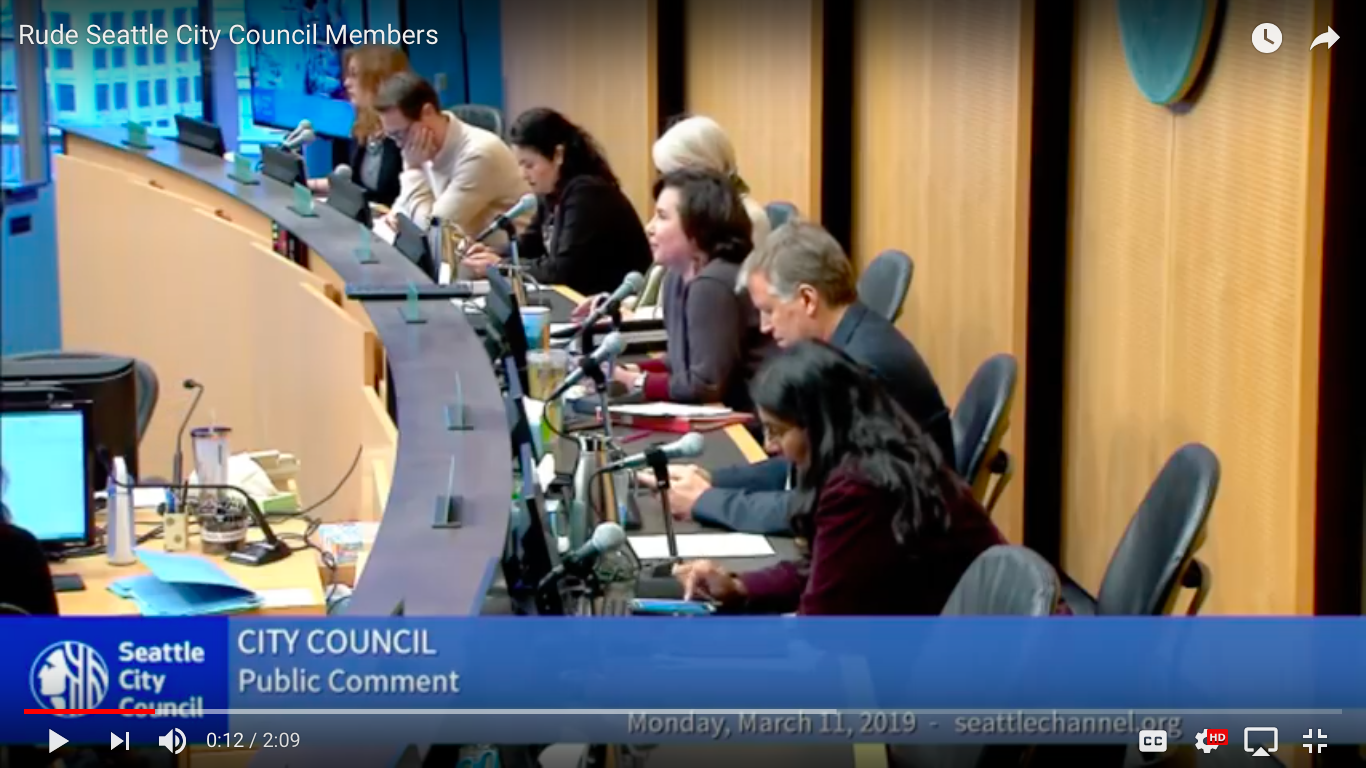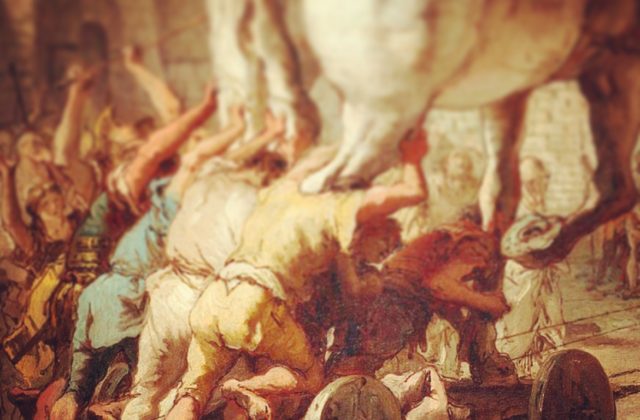F**K Inflation: Everyone is After the Wrong Enemy
Well, maybe this will get your attention post no-collusion Sunday. The real enemy of poor people is not gentrification, something that has no quantitative measure, but inflation, something that does. Prices are going up. Yes. They are. That’s real. But why? It isn’t because white people are pushing black people out of certain neighborhoods. But if you listen to the narrative in popular culture, it is not scarcity of housing that drives up prices but white people buying up black neighborhoods. I’ve already looked at the numbers. Yes, the Central District has seen a white increase while black people’s numbers have dropped. But the city, overall, is less white, with other neighborhoods like Delridge and Lake City are seeing big gains in black and other minority populations. This weekend I was introduced to OG Swaggerdick. He has a great rap called F**k Gentrification. Here’s a bit more about him:
OG is one of a handful of up and coming Boston rappers who have united in the last two years to make up what is becoming the city’s most exciting hip-hop scene in recent memory. Traditionally, Boston has been a place that subscribes to an outdated notion of what rap music is supposed to sound like—poe-faced, reductive boom-bap, indistinctive and indebted to New York. So when OG and his peers (Michael Christmas, Cousin Stizz in particular) all claim a shared love for Lil B is what brought them together, it’s kind of mind-boggling. It’s especially so considering how different each of their music is—theirs is an attitudinal alliance rather than a stylistic one, allowing their individuality to shine in a city that classically has defined itself in terms to New York, rather than celebrating what makes its rappers unique. Christmas’s sound falls somewhere between the everyman charm of Curren$y and the technique of Earl Sweatshirt. Stizz is more of the traditional street rapper. And the 22-year-old OG Swaggerdick is, well, he’s something else.
I have a lot of respect for this guy based on what I saw of the video and his write ups. And here’s the thing, he’s right about one thing, inflation (adult language ahead!).
Fuck raising prices,
Put them chips back,
They was 50 cents before,
Now they’re 59 cents,
They was a dollar before,
Now they’re a dollar sixty-nine, man,
Hey, fuck gentrification
Now you know this space has hosted Burke and Virgil. I welcome OG Swaggerdick. But I think he’s picking on the wrong thing. It’s inflation he’s mad about and that’s what he’s angry about. The greatest enemy of poor people is inflation, not the resentment of “gentrification,” something without a measure and therefore no solution.
Swaggerdick says this, something I sympathize with:
We was already slaves
Bad enough we ain’t got shit
Y’all just take it away
I completely agree. But it isn’t the shibboleth of gentrification we hate and oppose together and what takes things away, but the real threat of inflation, what happens when there is short supply of something in high demand. If Swaggerdick focused his lyrics and talents on shaming white single-family home owners who benefit when housing is scarce maybe we’d get somewhere. I think that will happen. Our common enemy is inflation, something created by predominately white single-family homeowners looking to keep equity “skyrocketing” for their homes.
Here’s the official video.
Let’s Be Careful: Do We Want the City Council Determining Who is Sane?
But the truth is, that always both the bad have persecuted the good, and the good have persecuted the bad: the former doing harm by their unrighteousness, the latter seeking to do good by the administration of discipline; the former with cruelty, the latter with moderation; the former impelled by lust, the latter under the constraint of love. For he whose aim is to kill is not careful how he wounds, but he whose aim is to cure is cautious with his lancet; for the one seeks to destroy what is sound, the other that which is decaying. The wicked put prophets to death; prophets also put the wicked to death. The Jews scourged Christ; Christ also scourged the Jews. The apostles were given up by men to the civil powers; the apostles themselves gave men up to the power of Satan. In all these cases, what is important to attend to but this: who were on the side of truth, and who on the side of iniquity; who acted from a desire to injure, and who from a desire to correct what was amiss?
Augustine’s “Letter to Vincentius,” Letter 93, (A.D. 408) in which Augustine suggests there is such a thing as “righteous persecution.”
Let us be very, very, very careful.
I’ve heard a lot about the recent KOMO report called, “Seattle is Dying.” I will say there is some truth in the report, and something convincing about the need for the City to reconsider it’s approach to the problem of people camping on rights of way. I think there is something to the idea that lack of enforcement of lesser crimes has given a foothold to a mix of people genuinely rejecting shelters because of the barriers they present (no dogs, no couples, no drinking etc.) and those who are indulging in a spiral into oblivion in public. There seems little doubt and growing consensus from everywhere that the current approach to the problem is not working and that the City Council and Mayor have failed. The bottom line is that homelessness is hard to define and has many causes and there isn’t a single or simple solution.
I have written about why I think both encampments and people who live in cars are reacting, in their own way, to price signals in the market. The message these people are sending is clear: the current shelter system doesn’t work for them. Living in improvised camps or vehicles is preferable to moving all their possessions around day after day, being exposed to long waits for shelter, and having restrictions imposed on their lifestyles. I’ve suggested working with people to move from the toehold of stability they’ve established into more conventional and legal forms of shelter. This takes work, not rhetoric; innovative thinking not sweeps or shrugging toleration.
However, I suggest that we all proceed with caution as the notion of involuntary commitment to secure facilities for assessment of addiction and mental health gains a place is the discourse and dialogue about what Seattle should do. There are three key issues here.
First, who decides who is sane and not sane? Who makes the determination that a person is addicted? Furthermore, who makes the decision, and by what criteria, that an individual is a harm to herself and others? There are answers to these questions, and our legal and health system have established criteria to make these decisions and to consign an individual to what amounts to incarceration and the loss of freedom in their own best interests and the interests of the wider community. But these actions are generally taken one at a time, slowly, and with great deliberation. One might even say, “It is difficult.” Shouldn’t it be? Taking away someone’s freedom should be hard to do and “cleaning up our streets” with rapid determinations of sanity and addiction in the context of criminal legal proceedings seems very dangerous. Widespread and quick action will result in mistakes that we will all regret later. Is it worth it?
Second, do we want the same people who can’t process a building permit efficiently or run a public meeting making these determinations of who is going to lose their freedom and why? Has the City Council demonstrated any capacity for subtlety in making decisions about land use, housing, and taxation? Has the City, as an institution, demonstrated the good judgment and restraint that we’d expect from our local government? I’d suggest they have not. On the contrary, I have, in more than 20 years of working with and for government never seen one as broken, dysfunctional, and thoroughly disconnected from any awareness of basic economics and without any interest in learning about how complex systems work. The City is being misgoverned; I don’t want the City determining anyone’s sanity.
Finally, to the developers and land lords that I tirelessly defend at great personal risk to my own sanity and with consequent derision and dismissal; stop and think. Most of the people in Seattle who are provoked by this KOMO report – either angry neighbors or socialists or mindless advocates for more and more money for a broken system – would love to see you carted off to McNeil Island too, along with brogrammers, Jeff Bezos, and anyone they see as making too much money or somehow benefitting from growth. The outrage at what’s in the report will not lead to a relaxation of regulations and taxation that are making the housing situation worse; rather, I’d suggest, this foment will lead to even more restrictions, rules, regulations, and limits because most of these groups believe new growth and housing is at the root of Seattle’s problems. They also think you should pay to fix it. We must remember history.
Augustine began his career as a great advocate of toleration, particularly after two centuries of Roman persecution of Christians; but his frustration with heretics and theological disputes and the damage they did to that faith led him to construct an elaborate argument to impose persecution for people for the salvation of their eternal souls. What is the answer to Augustine’s question to Vincentius: who were on the side of truth, and who on the side of iniquity; who acted from a desire to injure, and who from a desire to correct what was amiss?
I don’t know. And I sure as hell don’t want these people making that decision.

You can read more about Augustine’s shift in this interesting article: https://www.libertarianism.org/columns/freethought-freedom-augustines-case-righteous-persecution
On the Radio in Cincinnati: The Slow Erosion of Private Rental Property
I was hoping it was going to be Les Nessman at WKRP but it turned out even better. Vena Jones-Cox is a Cincinnati based leader in real estate — well, a Real Estate Goddess. I’m thinking she might well have earned the title offering her own training courses, critiques of real estate education, and, yes, a radio show. She’s also very active in the Ohio Real Estate Investment Association (OREIA), an organization that, among other things, promotes the defense of property and business rights and the real estate community. Jones-Cox invited me to come on her show live to talk about the issues facing the rental property business that I most recently wrote about at Forbes (“Housing Is A Right!” Means An End To Private Rentals). I’ve never thought of myself as an advocate for private property rights. I don’t much like the word “rights” because of the tendency people have of associating the term with “God given rights” or what is typically call natural rights theory. I’m actually a Burkean. But what Jones-Cox and I share with many others is a growing awareness that there is an effort, however incoherent it may be today, to seize private rental properties via incremental changes to local and state laws. Take a listen. And no turkey jokes please.
The Wheels on the Horse Go ‘Round and ‘Round: The Council Passes MHA
I suppose I should have been emotionally prepared for the final passage of the City’s version of Mandatory Inclusionary Zoning, something they call Mandatory Housing Affordability (MHA). It is sad. But it’s passage seems like nothing more than reading the final punctuation on a municipal suicide note after the deed has been done; there is not much left to do but prepare for the aftermath. Monday afternoon, unanimously, and with much self-congratulation, the Seattle City Council decided to tax all new housing development in the city for the purpose of generating money for non-profit housing developers. As a bit of therapy I’ve been reviewing one of my favorite and most relevant passages of the Aeneid: the taking in of the wooden horse into the walls of the city of Troy. In the story of the wooden horse is the lesson we must take from the whole MHA debacle.
If you’re not into extended allusions to old western classics now is the time to stop reading. And I’ve written on this theme before.
The story of the Trojan horse is one most people know. After a long and protracted but indecisive war between Greeks and Trojans, the Greeks hatch a plan to hide inside a big wooden horse, get taken into the heart of the city, and then ambush the Trojans. I see it as a classic urban tale. The Greek telling of the story in the Odyssey is much less elaborate than in its telling in Latin by Virgil. And there are differences worth noting in the Greek and Latin versions of the story about one of my absolute favorite parts of exactly how the Trojans get the horse filled with Greeks bent on the destruction of Troy into their city, the wheels put under the horses legs.
In the Greek take, Epeius a great architect includes the wheels as part of the construction of the horse.
In the Taking of Ilios by Tryphiodorus, the author includes a fabulous and detailed description of the horse and drama of the Greeks climbing inside with “Epeius of glorious craft” being the last one to board the machine and Odysseus closing the hatch. And the final detail added to the horse by Epeius was the wheels.
And when he had wrought all the warlike horse, he set a well-spoked wheel under each of its feet that when dragged over the plain it might be obedient to the rein, and not travel a difficult path under stress of hands.
Quintus Smyrnaeus in Book XII of his The Fall of Troy details the inspiration of the seer Chalchus to build a wooden horse and the divine inspiration of Epeius (say, eee pie us) in a dream in which Athena promises she “would labour in his labour, and herself stand by his side,” as he designed and built it. When the time came, and the horse was left at the gates of Troy,
Then gathered all,
And o’er that huge Horse hastily cast a rope,
And made it fast above; for under its feet
Smooth wooden rollers had Epeius laid,
That, dragged by Trojan hands, it might glide on
Into their fortress
Homer’s Odyssey doesn’t get into the design in such detail nor does it mention the wheels, but it has a different take on where the council sat down and debated what to do with the horse.
For the Trojans themselves had drawn the horse into their fortress, and it stood there while they sat in council round it, and were in three minds as to what they should do. Some were for breaking it up then and there; others would have it dragged to the top of the rock on which the fortress stood, and then thrown down the precipice; while yet others were for letting it remain as an offering and propitiation for the gods. And this was how they settled it in the end, for the city was doomed when it took in that horse, within which were all the bravest of the Argives waiting to bring death and destruction on the Trojans.
Homer has the Trojans discovering the horse and dragging it in and then having a big debate about what to do with it, a much different take from his colleagues and certainly from the Roman take. For Homer, the death of Hector was the decisive moment of the Trojan War in any event; the wooden horse was sort of the final doom.
Virgil, writing for the Roman Emperor Augustus, was spinning an origin story. The main character of the Aeneid, Aeneas, is one of the last survivors of Troy and he sets out with the household gods gathered from the city’s temples to found a new Troy, what eventually becomes Rome. Augustus is referenced a few times in prophecies but doesn’t feature as much as a Roman emperor might like. Along the way, Aeneas tells the sad story of the horse, and a key difference is what matters most to me,
A spacious breach is made; the town lies bare;
Some hoisting-levers, some the wheels prepare
And fasten to the horse’s feet; the rest
With cables haul along th’ unwieldly beast.
Each on his fellow for assistance calls;
At length the fatal fabric mounts the walls,
Big with destruction.
The pain and agony of the telling of the story when its told by Aeneas is the many warnings they received (at least 3) to not take the horse inside the gates and the struggle they had getting it in. This is not trivial. Imagine being in a car wreck you could have easily avoided by staying home, but forgetting the keys, going back inside, getting them, then forgetting your phone and going back again. You can see the point; it didn’t have to happen.
What’s worse, and to me the symbol of the folly of Troy, is the absence in the Aeneid of Epeius’ wheels. There’s the horse just kind of sunk into the sand. It’s big and its heavy and its full of Greeks. The most sensible and easiest thing to do would be to leave the damn horse there. And once Laocoon hurls his spear into its side, proves that it is hollow and everyone hears the noise from the Greeks from within, you’d think that would have been the prevailing wisdom.
No. Let’s all get together, make a big hole in the city’s walls and build some wheels for this baby.
In his, Virgil’s Aeneid: Decorum, Allusion, and Ideology, Wendell V. Clausen digs into the Latin to draw out both the tragedy and horror of the wheeled horse. In a later translation (Williams, 1910) Aeneas recalls that,
Yet frantic pressed we on, our hearts all blind,
And in the consecrated citadel
Set up the hateful thing.
“Hateful thing” is elsewhere translated as “ill-omened thing” from the Latin, “monstrum infelix.” Claussen writes about that word, “monstrum” in the context of the phrase, “pedibusque rotarum subiciunt lapsus,” which from reading about this and my own weak Latin is essentially, “Smooth-gliding wheels were put under its feet.” But the notion of a horse with wheels instead of feet made it like seem like something closer to our own word “monster,” something violating the rules of nature. Clausen’s take invites us to think of the horse in the way we’d understand how Godzilla functions in our own time, the product of ill advised nuclear testing, horrible, unnatural, destructive and representing the dark side of scientific innovation – and our own doing.
Like the leaders of Troy, the Seattle City Council has been warned again and again that adding costs to the production of housing will not spur its production. Instead, adding additional costs in the form of fees will mean a slow down in production with many projects going on hold. And how will production ramp up again? When prices and rents go up enough to pay for fees we’ll see production levels rise and projects that were shelved go into production. Angry neighbors opposed the Council because they were upset about the modest (the Council’s term) increases in density. And they’ve been warned of the legal jeopardy created by the programs violation of the plain language in RCW 82.02.020 that doesn’t allow oxymoronic mandatory incentive programs.
And the whole proposal is built on a problem defined 5 years ago and with a solution, a few units of expensive subsidized housing, 5 years from now. As I said when I was on the radio not long ago, the actual costs of the 6000 units promised by the program is more like $1.95 billion, not the $472 million in fees the Council claims are forthcoming from the program. And, based on their own numbers, the fees will add as much as $15,000 per unit to the production of market rate housing. I’m not even going to bother to link to the data behind this because what difference does it make now, something to think about when considering that the Seattle Times only covered the issue of what fee money will buy just a week ago.
So its almost like I am there, in Asia Minor on a beach, feeling the sun burning my forehead. I can feel the sand between my toes. I can see a huge horse there sinking into the sand. There’s Sinon, the young Greek spy being quizzed by the Seattle City Council. There’s the spear hurled by Laocoon. I can hear Cassandra’s screaming, as she is lead away. And like a dream, I run toward the growing crown under the shadow of the horse, but I can’t move. I see the crowd approaching with flowers and a strong cable, and, yes, a beautiful set of wheels.
Aeneas had the advantage of watching the city he loved burn to the ground. When he arrived in Carthage and Dido fell in love with him for his suffering the whole world knew of the folly of the wooden horse, the fall of Troy, and even the Gods were watching how the story would play out. Seattle won’t burn to the ground with the passage of MHA. We won’t see building permit applications dwindle to nothing.
We’ll see prices rise to absorb fees and to offset the growing burden of regulatory overreach. When prices go up, we’ll here the Council debate what to do, and then we’ll hear them say, “The only answer is to raise the fees to build a few hundred more units of subsidized units years from now!” And they will. And they’ll claim that they’ve solved the problem at least until prices go up again, and the inflation will punish poor people the hardest at least until an economic downturn causes production and demand to slowdown; hardly the fall of Troy.
Nevertheless, the scene, a council of city leaders engaged in a deliberate and strenuous endeavor that most certainly not solve the problem of higher housing prices but ensure that they will always rise when demand goes up, surely is tragic.
Featured image is detail of The Procession of the Trojan Horse into Troy from about 1760, Giovanni Domenico Tiepolo, The National Gallery, London
The best primary resource I’ve found online for the Aeneid and other classic texts is at Tufts University’s The Hopper.
Please Read: The Problems with the Problem of Homelessness
The way we talk about homelessness has always bothered me. I don’t think we have a definition of the problem that helps develop good policy. You can’t solve a problem that can’t be defined and measured. And the causes? The causes of homelessness are often the jumping off point for a policies that extract money from the economy for non-profits. Overall, homelessness is being used to squeeze cash and power out of the system for groups with political agendas. Are there people who really want to solve the problem, however they see it? Of course. But many of those people think they’re group or approach is the solution, and therefore the best candidate for more cash from taxes, fees, fines, and other extractions. I finally decided to write about this at Forbes in a three part series. If you’re going to read one thing (or three things) this week, please read this series. We need to push back on the narrative we’re getting sold and we’re buying in the press.






